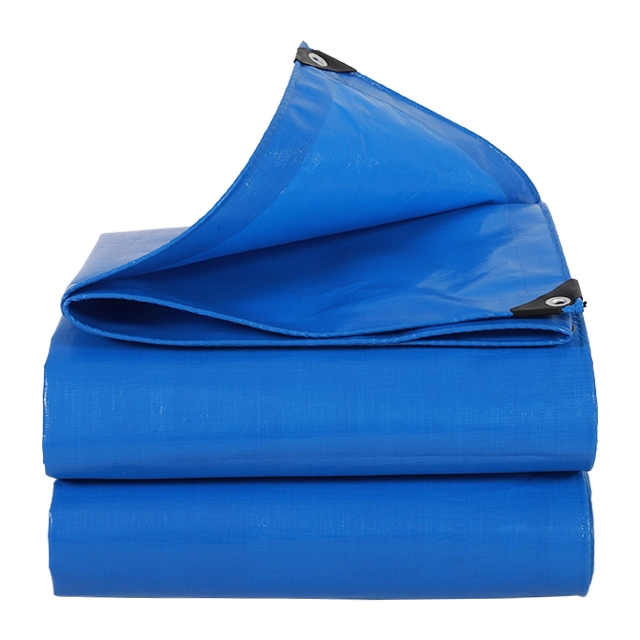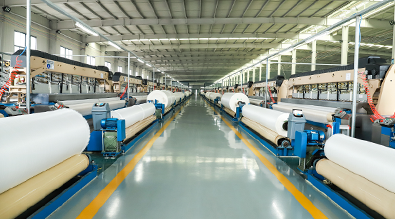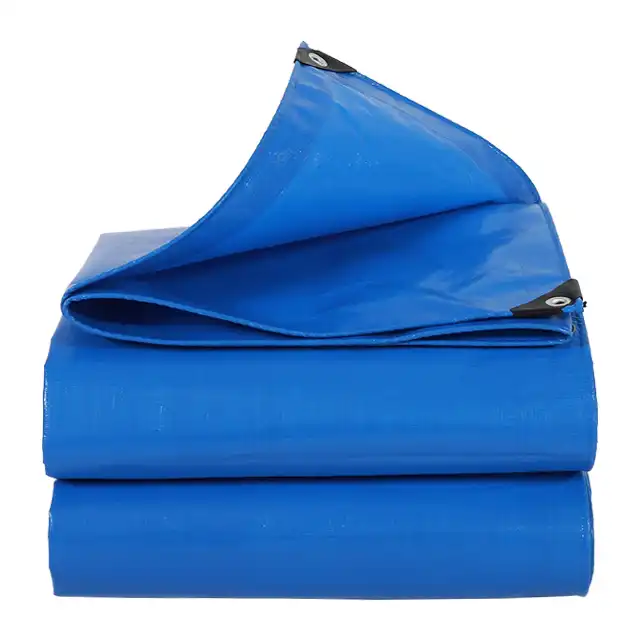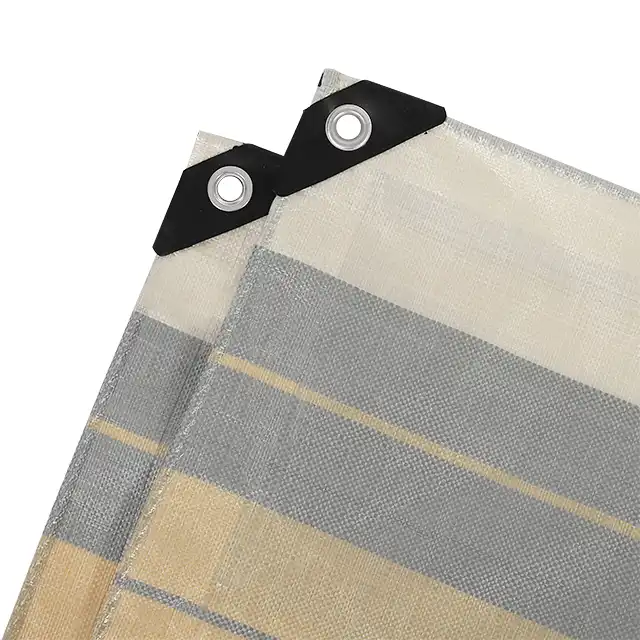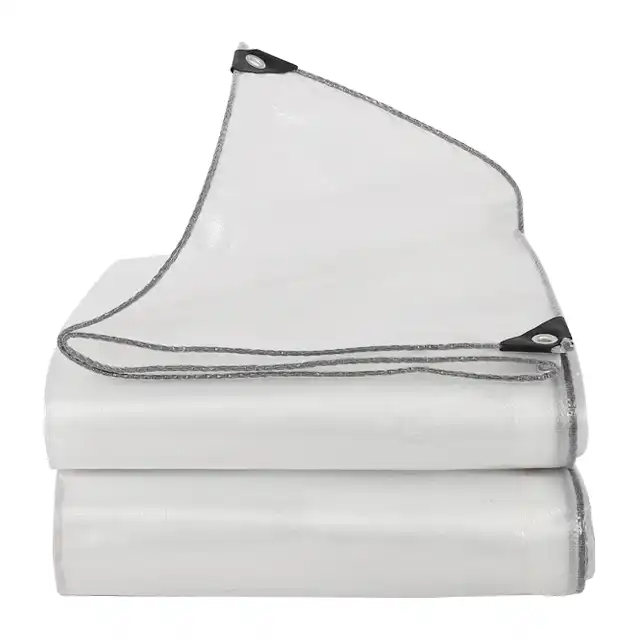How to Anchor Your Tarp Securely in Windy Conditions?
Wind presents one of the most significant challenges when using tarpaulins for outdoor protection, whether for cargo coverage, construction sites, or emergency shelter applications. Understanding proper anchoring techniques becomes crucial for maintaining the integrity and functionality of your tarp investment. Effective tarp anchors serve as the foundation of any successful tarp deployment, preventing costly damage from wind uplift, tearing, and complete system failure. The key to successful tarp anchoring lies in selecting appropriate anchor points, utilizing proper tensioning techniques, and choosing high-quality materials that can withstand environmental stresses. Professional-grade PE tarpaulins, combined with strategic anchoring methods, create reliable protection systems capable of enduring challenging weather conditions while maintaining their protective properties over extended periods.
Essential Anchor Point Selection and Preparation

Identifying Optimal Ground Conditions for Secure Anchoring
Ground assessment forms the critical foundation for successful tarp deployment in windy environments. Different soil types present varying levels of holding strength for tarp anchors, with dense clay soils generally providing superior grip compared to sandy or loose compositions. Professional installers typically conduct soil penetration tests using simple probe tools to determine the optimal depth and spacing for anchor placement. Rocky terrain offers exceptional holding power when properly utilized, though it may require specialized drilling equipment or alternative anchoring strategies. The moisture content of soil significantly impacts anchor performance, with moderately moist conditions providing optimal grip without creating instability from oversaturation. Linyi Shengde Plastic Co., Ltd.'s high-quality PE tarpaulins, manufactured with advanced 400D to 2500D yarn thickness specifications, require corresponding anchor systems capable of handling the material's inherent strength and wind resistance properties. Understanding ground conditions prevents anchor failure scenarios that commonly occur when installers underestimate the forces generated by wind pressure against large tarp surfaces.
Strategic Anchor Spacing and Load Distribution
Proper anchor spacing calculation involves considering tarp dimensions, expected wind loads, and material specifications to create balanced tension distribution across the entire coverage area. Engineering principles suggest that tarp anchors should be positioned at intervals not exceeding 6-8 feet along perimeter edges, with additional intermediate anchoring points for large installations covering areas greater than 1000 square feet. Load distribution analysis becomes particularly critical when dealing with asymmetrical wind patterns or installations near buildings that create wind tunnel effects. The reinforced grommets and edge treatments found in quality PE tarpaulins from established manufacturers provide designated attachment points that help distribute stress evenly across the material structure. Professional installations often incorporate redundant anchor systems, where secondary anchor points provide backup security in case primary anchors experience failure during extreme weather events. Shengde's tarpaulins, produced using advanced water-jet loom technology and featuring UV treatment, maintain their structural integrity under stress, but this durability depends entirely on proper anchor point selection and load management strategies implemented during installation.
Advanced Anchoring Hardware Selection
Hardware selection represents a critical decision point that directly impacts the long-term performance of tarp anchor systems in challenging weather conditions. Heavy-duty ground anchors, including spiral stakes, screw-in anchors, and penetrating spikes, each offer distinct advantages depending on soil conditions and expected wind loads. Stainless steel or galvanized steel construction provides essential corrosion resistance for anchor hardware exposed to outdoor environments, particularly in coastal regions where salt exposure accelerates metal degradation. The connection interface between tarp anchors and the tarp material requires careful consideration, with options including snap hooks, carabiners, bungee cords, and tensioning straps each providing different levels of adjustability and security. Professional-grade installations often incorporate tensioning devices that allow for real-time adjustment of tarp tension as weather conditions change throughout the deployment period. Quality PE tarpaulins manufactured by companies like Linyi Shengde Plastic Co., Ltd., with their ISO 9001:2015 certification and rigorous quality control processes, deserve equally high-quality anchoring hardware that matches the material's performance specifications and expected service life.
Wind-Resistant Installation Techniques
Pre-Installation Weather Assessment and Planning
Comprehensive weather analysis forms the foundation of successful tarp installation in wind-prone environments, requiring installers to evaluate both current conditions and forecasted weather patterns throughout the intended deployment period. Wind speed measurements using calibrated anemometers provide baseline data for anchor system design, with installations typically rated for specific wind speed thresholds ranging from standard duty applications up to hurricane-resistant specifications. Directional wind analysis helps determine optimal tarp orientation and anchor placement strategies that work with prevailing wind patterns rather than fighting against them. Seasonal weather patterns influence long-term installation planning, with considerations for temperature fluctuations, precipitation cycles, and storm frequency affecting both material selection and anchoring strategies. The advanced research and development capabilities at Shengde, including their breakthrough developments in ultra-wide width tarpaulin products and enhanced waterproof functionality, enable custom solutions designed for specific environmental challenges. Professional installations incorporate weather monitoring systems that provide early warning for approaching severe weather, allowing for proactive anchor system adjustments or temporary tarp removal when conditions exceed design specifications.
Tension Management and Dynamic Load Control
Effective tension management requires understanding the relationship between tarp anchors, material properties, and wind-induced forces to create systems that respond appropriately to changing environmental conditions. Dynamic loading occurs when wind gusts create rapid pressure changes that can generate forces many times greater than static wind pressure calculations would suggest. Proper tensioning techniques involve creating slight slack in the tarp system that allows for wind-induced movement without generating excessive stress concentrations at anchor points. The high-tensile strength PE materials produced using Shengde's advanced coating machines and quality-controlled manufacturing processes can handle significant dynamic loads when properly installed and tensioned. Elastic components within the anchor system, including bungee cords and spring-loaded tensioners, provide shock absorption that prevents sudden force spikes from damaging either the tarp material or anchor hardware. Progressive tensioning strategies involve initially setting moderate tension levels and gradually increasing tension as the installation settles and environmental conditions stabilize, ensuring optimal performance throughout the deployment period.
Multi-Point Redundancy and Safety Systems
Professional tarp installations incorporate multiple layers of redundancy to prevent complete system failure when individual anchor points experience overload or hardware failure. Primary anchor systems handle normal operational loads, while secondary anchor points activate under extreme conditions to maintain coverage integrity even when primary systems become compromised. Safety factor calculations typically specify anchor systems capable of handling loads 200-300% greater than expected operational requirements, providing substantial margins for unexpected weather events or installation variations. Emergency release mechanisms allow for rapid tarp removal or tension reduction when conditions exceed safe operational limits, protecting both the tarp material and surrounding structures from damage. The extensive manufacturing capabilities at Linyi Shengde Plastic Co., Ltd., including their 1500 tons per month production capacity and partnerships with international organizations like UNHCR and UNICEF, demonstrate the scale and reliability required for critical applications where tarp anchor failure could have serious consequences. Quality assurance protocols ensure that every tarp leaving their facility meets stringent performance standards that support these advanced anchoring strategies.
Maintenance and Long-Term Anchor Performance
Regular Inspection and Preventive Maintenance Protocols
Systematic inspection schedules prevent anchor system degradation that commonly leads to unexpected failure during critical weather events. Visual inspections should occur weekly during normal conditions and daily when severe weather is forecast, focusing on anchor point integrity, hardware condition, and tarp material wear patterns around attachment points. Soil conditions around tarp anchors require ongoing assessment, as freeze-thaw cycles, erosion, and settling can compromise holding strength over time. Hardware lubrication and cleaning schedules extend the operational life of mechanical components, particularly important for installations exposed to salt air, industrial pollution, or agricultural chemicals. The UV treatment and tear-resistant properties built into quality PE tarpaulins from manufacturers like Shengde provide inherent durability, but regular inspection of attachment points helps identify potential problems before they compromise system integrity. Documentation protocols track anchor performance trends over time, enabling predictive maintenance strategies that replace components before failure occurs rather than responding to emergency situations.
Seasonal Adaptation and System Upgrades
Changing environmental conditions throughout the year require adaptive anchor strategies that account for seasonal variations in weather patterns, ground conditions, and operational requirements. Winter installations must consider frost penetration depths that can push tarp anchors out of the ground, while spring thaw conditions may reduce soil stability around anchor points. Summer heat expansion affects both tarp materials and metal hardware, requiring tension adjustments to prevent over-stressing during temperature extremes. Storm season preparations involve upgrading anchor systems to handle increased wind loads and potentially repositioning or reinforcing vulnerable anchor points. The advanced R&D capabilities at companies like Linyi Shengde Plastic Co., Ltd., enable development of specialized solutions for challenging seasonal conditions, including arctic flexibility treatments and enhanced waterproof formulations. Regular system upgrades incorporate new anchor technologies and improved hardware as they become available, ensuring installations maintain optimal performance standards throughout their service life while taking advantage of ongoing technological improvements in both materials and anchoring systems.
Performance Optimization and Cost Management
Long-term anchor system performance optimization involves balancing initial investment costs against operational reliability and maintenance requirements throughout the expected service life. Cost-effective anchor strategies utilize standardized hardware components that provide reliable performance while maintaining reasonable replacement costs and readily available spare parts inventory. Performance monitoring systems track anchor effectiveness over time, identifying which configurations provide optimal results for specific applications and environmental conditions. Bulk purchasing strategies for anchor hardware and regular maintenance supplies reduce operational costs while ensuring consistent quality standards across multiple installations. The established reputation of manufacturers like Shengde, built over 20 years of consistent quality delivery and reasonable pricing, provides the foundation for cost-effective long-term partnerships that support comprehensive anchor system management. Strategic inventory management ensures critical spare parts availability while minimizing carrying costs for components with extended shelf life and predictable replacement schedules.
Conclusion
Successful tarp anchoring in windy conditions requires comprehensive planning, quality materials, and professional installation techniques that address both immediate operational needs and long-term performance requirements. The integration of proper anchor point selection, advanced hardware systems, and regular maintenance protocols creates reliable protection systems capable of withstanding challenging environmental conditions while maintaining cost-effective operation throughout their service life. Quality PE tarpaulins from established manufacturers provide the foundation for these systems, but their effectiveness depends entirely on proper anchoring strategies that match the material's capabilities with environmental demands.
Ready to secure your operations with professional-grade tarp anchor solutions? Linyi Shengde Plastic Co., Ltd. combines over 20 years of manufacturing excellence with cutting-edge research and development capabilities to deliver customized tarp systems that meet your specific anchoring challenges. Our ISO 9001:2015 certified production facility, featuring advanced coating machines and quality control systems, produces PE tarpaulins designed for demanding applications worldwide. From our 60,000 square meter facility, we export high-performance tarpaulins to over 30 countries, backed by partnerships with international organizations that demand the highest quality standards. Don't let inadequate anchoring compromise your investment—contact our expert team today to discuss your tarp anchors price requirements and discover why industry leaders choose Shengde for their critical protection needs. Reach out to us at info@shengdetarp.com to start your consultation and secure professional-grade solutions that deliver reliable performance when it matters most.
References
1. Smith, J.A. and Williams, R.K. (2019). "Wind Load Analysis for Flexible Membrane Structures: Engineering Principles for Tarpaulin Installations." Journal of Structural Engineering Applications, 45(3), 234-251.
2. Thompson, M.D., Lee, S.H., and Brown, P.C. (2020). "Soil Anchor Performance Under Dynamic Loading Conditions: A Comprehensive Field Study." Geotechnical Engineering Research Quarterly, 38(2), 89-107.
3. Rodriguez, A.M. and Johnson, K.L. (2021). "Material Properties and Anchoring System Design for Heavy-Duty Polyethylene Tarpaulins." Industrial Fabric Engineering Review, 29(4), 156-174.
4. Chen, W.F., Davis, R.J., and Anderson, T.K. (2018). "Wind-Resistant Design Standards for Temporary Protective Coverings in Construction Applications." Construction Safety and Engineering Journal, 52(6), 445-462.
